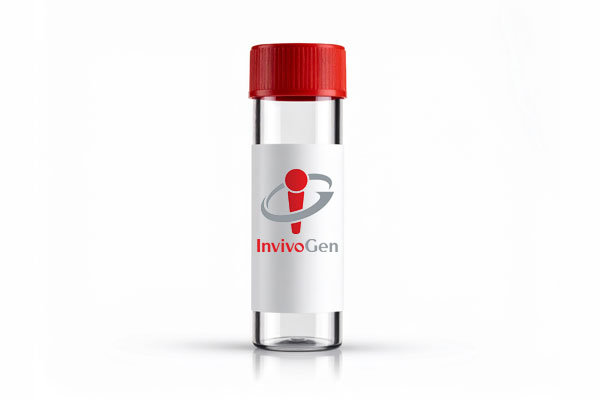
Anti-hPD1-Pem-hIgG1NQ
-
Cat.code:
hpd1pe-mab12
- Documents
ABOUT
Human PD-1 (pembrolizumab) antibody - Human IgG1, non-glycosylated
Anti-hPD1-Pem-hIgG1NQ features the constant region of the human IgG1 isotype and the variable region of pembrolizumab. Pembrolizumab is a humanized IgG4 monoclonal antibody that contains an engineered hinge region mutation (S228P) designed to prevent exchange of IgG4 molecules. This antibody targets the PD-1 receptor found on activated T cells, B cells, and myeloid cells. Under normal physiological conditions, PD-1 negatively regulates T cell activation thereby preventing autoimmunity [1]. Under pathological conditions, cancer cells produce PD-L1 (programmed cell death 1 ligand 1), the agonist that binds and activates PD-1. Activated PD-1 enables the cancer cells to evade the immune system. Pembrolizumab binds and blocks the activation of the PD-1 receptor, thereby resulting in the activation of T cells [2]. Pembrolizumab has been approved by the FDA for the treatment of metastatic malignant melanoma, and is currently under regulatory review in the EU [3].
Anti-hPD1-Pem-hIgG1NQ contains a N-glycosylation mutation of the constant region of the human IgG1 where potential asparagine (N) glycosylation sites are substituted by glutamine (Q) residues resulting in the production of a non‑glycosylated antibody. Glycosylation of an antibody has no effect on antigen binding but is essential for Fc receptor-mediated activity [4]. In non‑glycosylated antibodies the effector mechanisms mediated through the Fc receptors types (FcγRI, FcγRII, FcγRIII) and the C1q component of complement are severely compromised or ablated [5]. It has been produced in CHO cells and purified by affinity chromatography with protein G.
Anti-hPD1-Pem-hIgG1NQ was generated by recombinant DNA technology. It has been produced in CHO cells and purified by affinity chromatography.
References:
1. McDermott D. & Atkins M. 2013. PD-1 as a potential target in cancer therapy. Cancer Med. 2(5): 662–673.
2. Tumeh PC. et al., 2014. PD-1 blockade induces responses by inhibiting adaptive immune resistance. Nature. 515(7528):568-71.
3. Poole RM., 2014. Pembrolizumab: first global approval. Drugs. 4(16):1973-81.
4. Arnold J. et al., 2007. The impact of glycosylation on the biological function and structure of human immunoglobulins. Annu Rev Immunol 25:21-50.
5. Jefferis R., 2009. Glycosylation as a strategy to improve antibody-based therapeutics. Nat Rev Drug Discov. 8:226-34.
All products are for research use only, and not for human or veterinary use.
SPECIFICATIONS
Specifications
PD-1
Human
ELISA, Neutralization assay, Flow cytometry
Solution in a sodium phosphate buffer with glycine, saccharose and stabilizing agents
Negative (tested using EndotoxDetect™ assay)
Flow cytometry
Each lot is functionally tested and validated.
CONTENTS
Contents
-
Product:Anti-hPD1-Pem-hIgG1NQ
-
Cat code:hpd1pe-mab12
-
Quantity:100 µg
Shipping & Storage
- Shipping method: Room temperature
- -20°C
- Avoid repeated freeze-thaw cycles
Storage:
Caution:
DOCUMENTS
Documents
Technical Data Sheet
Safety Data Sheet
Certificate of analysis
Need a CoA ?
